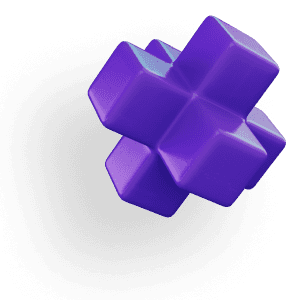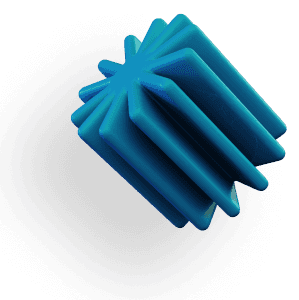HOW TO USE GPU
SketchUp (v.2020 and newer)
SketchUp is a popular 3D modeling tool, and enabling GPU acceleration can significantly improve performance, especially when working on large or complex models. SketchUp leverages OpenGL for rendering, meaning that a compatible and up-to-date GPU is essential for smooth navigation and modeling.
How to Enable GPU Acceleration in SketchUp
Launch SketchUp
Open SketchUp from the default location:C:\Program Files\SketchUp\SketchUp 20##\SketchUp.exeEnable OpenGL for GPU Rendering
From the top menu, select Window > Preferences.
On the left side, select OpenGL.
The Multi-sample Anti-aliasing will automatically default to 4x, and Hardware Acceleration will be enabled by default. This ensures that SketchUp is utilizing your GPU for rendering.
Check GPU Details
Under Graphics Card Details, you can view the GPU SketchUp is using for rendering. Ensure that your system’s GPU is listed here.
Top Tips to Speed Up SketchUp Performance
Disable Shadows and Edge Styles
SketchUp’s Shadows and certain Edge Styles (like Profiles, Jitter, and Extensions) can slow down performance, especially in large models. Turn these features off while working, and only enable them when needed for presentations or exports.Use Low-Resolution Textures
While working on models, keep Use Maximum Texture Size unchecked in the OpenGL settings. This reduces the load on your GPU by displaying textures at lower resolutions until you are ready for final rendering.Optimize Model Complexity
Simplify large models by using Section Planes and Layers to focus on specific areas of your project. You can also use Outliner to keep track of groups and components, but avoid keeping it open while working, as it can slow down performance on complex models.Keep GPU Drivers Updated
Regularly update your NVIDIA or AMD drivers to maintain compatibility with SketchUp and improve OpenGL performance. Updated drivers can fix bugs, improve stability, and increase rendering speed.
SketchUp System Requirements
Minimum Requirements for Windows:
Operating System: Windows 10 or Windows 11.
Processor: 1 GHz.
RAM: 4 GB.
Hard Disk Space: 1.5 GB of available space.
Graphics Card: Modern GPU with at least 512 MB of memory and support for hardware acceleration.
Additional: 3-button, scroll-wheel mouse.
Recommended Specifications for Windows:
Processor: 2+ GHz.
RAM: 8 GB or more.
Hard Disk Space: 2 GB of available space.
Graphics Card: Discrete graphics card such as a current generation AMD or NVIDIA with at least 1 GB of memory.
Additional: 3-button, scroll-wheel mouse.
Minimum Requirements for MacOS:
Operating System: macOS 12+ (Monterey).
Processor: 2.1+ GHz Intel™ processor.
RAM: 4 GB.
Hard Disk Space: 1.5 GB of available space.
Graphics Card: Modern GPU with at least 512 MB of memory.
Additional: 3-button, scroll-wheel mouse.
Recommended Specifications for MacOS:
Processor: 2.1+ GHz processor or current generation Apple M1 processor.
RAM: 8 GB or more.
Hard Disk Space: 2 GB of available space.
Graphics Card: Modern GPU with at least 1 GB of memory.
Additional: 3-button, scroll-wheel mouse.
Please note that SketchUp's performance relies heavily on your graphics card's ability to support OpenGL 3.1 or higher. Additionally, an internet connection is required to install and authorize your subscription, as well as to access certain features within SketchUp.
Top Recommended GPUs for SketchUp

NVIDIA Quadro P2200
This professional-grade GPU offers excellent performance for OpenGL-based applications like SketchUp, making it ideal for professionals who work with large models.NVIDIA RTX 3060
The RTX 3060 provides solid performance for rendering and is a great mid-range option for SketchUp users. It balances cost with strong GPU capabilities for both modeling and rendering tasks.NVIDIA Quadro RTX 4000
For high-end users dealing with complex models and requiring top-tier performance, the RTX 4000 provides the best of both worlds, speed and stability, particularly for large architectural or engineering projects.
By enabling GPU acceleration and following these performance tips, you can greatly enhance SketchUp’s responsiveness and speed, ensuring smooth operation even with large, complex 3D models.
What’s New in SketchUp 2025
If you’ve used SketchUp for a while, you probably noticed something: every new version feels just a little smoother. That’s not your imagination, SketchUp 2025 has quietly stepped up its graphics game in a big way.
A Faster, Smarter Rendering Pipeline
SketchUp’s Graphics Pipeline 3.0 now takes full advantage of modern GPUs. Orbiting around dense city models or detailed interiors no longer feels like dragging through molasses, frame rates are higher, and viewport stuttering is far less noticeable.
The new pipeline handles real-time shadows, reflections, and transparency layers more efficiently, spreading the workload across your GPU cores. If you’re on an RTX 40-series card or an Apple M3 chip, you’ll definitely feel the difference.

Real-Time Visualization, Built Right In
2025’s update tightens the connection between SketchUp, V-Ray 6, and Enscape, making real-time rendering almost seamless. You can now preview photoreal lighting and materials without leaving the main workspace.
And here’s where GPU power really flexes: those light and texture previews update instantly on a capable GPU. The result? You spend less time waiting for test renders and more time designing.
AI-Assisted Modeling Tools
Trimble has started rolling out AI-powered features inside SketchUp, like predictive snapping, smart object alignment, and automatic component grouping. They might sound small, but they’re game-changers for speed.
These tools rely on GPU acceleration to process geometry predictions in real time, so older GPUs might struggle to keep up. It’s one of the first times SketchUp truly rewards users running modern hardware.

2025 Performance Tips
Even with all these improvements, performance still comes down to how you work. A few small habits make a huge difference:
Use the new Frame Rate HUD to see how different visual settings impact real-time speed.
Keep an eye on VRAM usage when you’re dealing with complex Enscape scenes.
And if your GPU supports Vulkan, toggle it on, it often boosts viewport responsiveness compared to OpenGL.
Take It Further in the Cloud
If your current setup feels like it’s holding SketchUp back, you don’t have to rush to buy a new GPU.
You can run SketchUp 2025 on Vagon Cloud Computer, powered by multi-GPU RTX machines built for real-time 3D. That means full access to new features, shadows, Enscape, AI tools, without worrying about hardware limits. You just launch, design, and let the cloud handle the heavy lifting.
Enjoy Faster Renderings and Workflow with Vagon
When the goal is to cut down rendering times and speeding up your workflow, every second saved is a victory. But what if you could do more than just save a few seconds?
With Vagon’s cloud PCs powered by 48 cores, 4 x 24GB RTX-enabled NVIDIA GPUs and 192GB of RAM, work on your projects faster than ever. It’s easy to use, right in your browser. You can transfer your workspace and files in just a few clicks and try it yourself!






